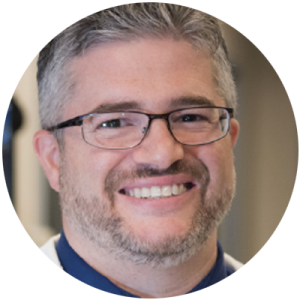What’s new in medical research related to spinal cord injury? If you ask Dr. Eve Tsai that question, be prepared for a lengthy and excited reply about the potential of stem cells to repair damaged spinal cords. Her passion for the topic spills out with every explanation and anecdote.

Dr. Tsai is the Suruchi Bhargava Chair in Spinal Cord and Brain Regeneration Research and Associate Professor of Surgery in the Division of Neurosurgery at The Ottawa Hospital and the University of Ottawa. Her research interests include spinal cord repair strategies, nerve regeneration, MRI imaging of spinal cord tracts, and clinical outcomes after spine surgery. In addition to her medical degree and training at the University of Toronto, Dr. Tsai has also completed a PhD in spinal cord repair and has won numerous clinical, research, teaching and humanitarian awards.
But she doesn’t want to talk about any of that. She has too much to say about expanding spinal cord research at The Ottawa Hospital and translating that research into effective therapies that make people’s lives better.
“A lot of research in any area is conducted on animals,” she says. “And there is a very high failure rate when those studies are translated to people. For example, rat stem cells act and respond differently than human stem cells. It’s always best to work with live human tissue, but that’s been difficult when it comes to the spinal cord. It hasn’t been available as an option.”
But that is changing in Ottawa. Because Dr. Tsai is a practising neurosurgeon, she has the skill to remove the spinal cord from bodies donated to science for organ transplantation and research. This makes it possible to gather stem cells from human spinal cords for use in studies. Stem cells are unique because they can replicate and have the potential to repair damaged cells, like the nerve cells in an injured spinal cord.
Dr. Tsai has a future ideal in mind: to use a person’s own stem cells to repair their spinal cord. In order to get there, she needs to work with donated human tissue.
“Maybe we’ll be able to take some of a person’s stem cells, grow more outside their body, and then return them to the spine to do some repair,” she says. “Or maybe we can use some biomedical devices to directly apply growth factors to a person’s stem cells in their body. Or create a scaffold for the nerves to be regenerated. There are lots of investigative possibilities.”
As an undergraduate and then throughout medical school, Dr. Tsai was always interested in spinal cord and brain regeneration.
“I’m drawn to the idea of hope,” she says. “I’ve always been struck by how one brief moment, like a sudden accident, can change a person’s life dramatically and forever. So, I’m inspired by the patients I work with to make this research relevant for them. It’s all about translating lab results into benefits for people. I’m hopeful that I can make a difference.”
Like Dr. Tsai, Dr. Adam Sachs also works within the Neuroscience Program at The Ottawa Hospital’s Research Institute. And similarly, his goal is to restore movement for those with a spinal cord injury. But his research focus is entirely different.

Dr. Sachs is Head of Integrated Spine Surgery, Director of Neuromodulation and Functional Neurosurgery at The Ottawa Hospital, and Associate Professor of Surgery at The University of Ottawa. Prior to medical school, he completed a Bachelor of Science in physiology and math and then a master of science in applied mathematics. Today, he investigates how brain-computer interface (BCI) technology makes it possible to control objects outside the body using only the brain.
A brain-computer interface makes it possible to understand how our brain signals interact with our physical movement, like lifting an arm or pointing a finger.
“We can place electrodes in different areas of the cerebral cortex,” explains Dr. Sachs. “This is the outside layer of the brain that allows us to process information through our senses, like vision and touch, and to control our physical movement. We use those electrodes to gather data about neural activity so that we can potentially develop computer algorithms to decode that activity into actions.”
What kinds of actions? Today, the movement of a robotic arm. In the future, possibly a person’s own arm. The idea is to decode simple thoughts about intended movements and then bypass the spinal cord injury to communicate directly with technological devices. The overall goal is to improve quality of life through greater mobility and independence.
In fact, Dr. Sachs is currently recruiting participants willing to have electrodes implanted in their brain to move toward exactly that goal. For a phase one safety trial underway, he is looking for people in the Ottawa area with a C5 level or higher injury, a fair amount of upper body disability, and otherwise good health.
Aside from the health criteria and willingness to have surgery, Dr. Sachs shares some insights about who might enjoy helping to develop this cutting-edge technology.
“Ideal study participants might be interested in science and engineering, in the idea of advancing knowledge, or just in helping others with SCI. There is a time commitment, of course. But ultimately, we would love to hear from people who enjoy learning about new technologies and therapies. That’s a great fit for this kind of study.”
Will they get to take home a robotic arm as a parting gift for participating?
“I’m afraid not,” laughs Dr. Sachs. “All I can offer is a sense of purpose and accomplishment. Studies like this will make a difference in people’s lives in the future.”
Want to help advance science and help others with SCI?If you are interested in joining the research study “NeuroCognitive Controller: Implanted device for assistive communication for persons with tetraplegia Safety Study” run by Dr. Sachs at The Ottawa Hospital or if you are interested in learning more about stem cells for spinal cord and brain repair or contributing to the research, please contact Nella Bianconi at 613-761-5073 or [email protected]. |






